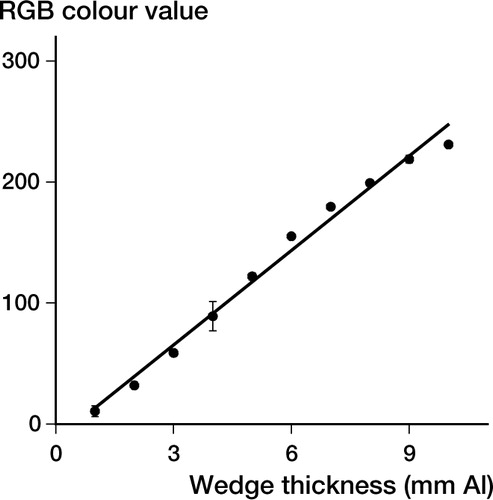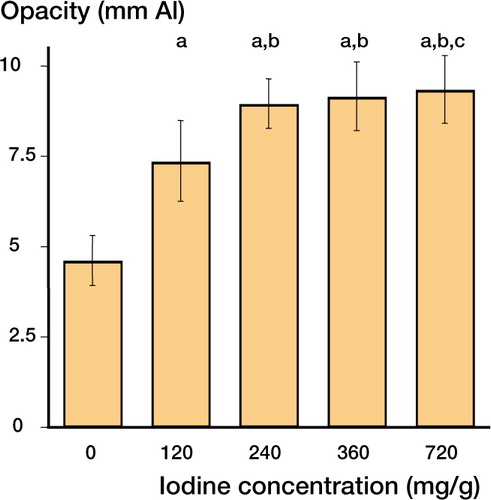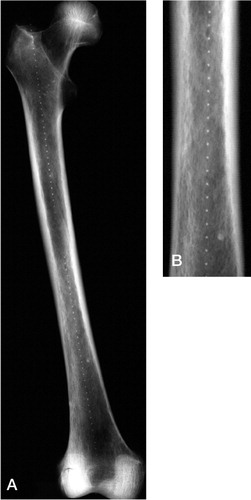Figures & data
Figure 1. The average RGB color value of the aluminium wedge is plotted as a function of the thickness of the wedge segment. The trend line (R2=0.99) was calculated as: aluminium thickness=(RGB color value + 13.6) / 26.04. Values represent the average±SD of two experiments, totaling at least 10 measurements.

Figure 2. The average calculated radio-opacity (using the aluminium wedge standard curve) of 10×10 mm markers is plotted for different iodine concentrations (0, 120, 240, 360, 720 mg/g). In the range 0–240 mg/g, each increase in iodine concentration caused a significant increase in radio-opacity compared to the previous concentration (a: p<0.001 compared to control; b: p<0.001 compared to 120 mg/g; c: p<0.015 compared to 240 mg/g), while iodine concentrations higher than 240 mg/g caused only a minimal increase in radio-opacity. The results are the average of two experiments, totaling five measurements per marker and at least four markers per iodine concentration.

Figure 3. This radiograph of the experimental set-up shows the aluminium wedge and a series of 10×10 mm markers of increasing iodine concentration (0–720 mg/g).

Figure 4. Radiograph of a rabbit femur with biodegradable radiographic markers clearly discernable. The Markers were placed 20 mm and 30 mm apart.

Figure 5. A Human femur covered with markers at 5-mm intervals. B. This cut-out at higher magnification clearly illustrates the difference in radio-opacity between the markers and the bone.

Distances measured between markers in rabbit femora (n=8) and in human femora (n=17) are shown together with standard deviation and accuracy. The increasing difference between the actual marker distance and the distance measured in the human femora may partly reflect the effect of magnification of the distance measured caused by the distance of the markers from the film, which is more pronounced in the large human bones than in the small rabbit bones